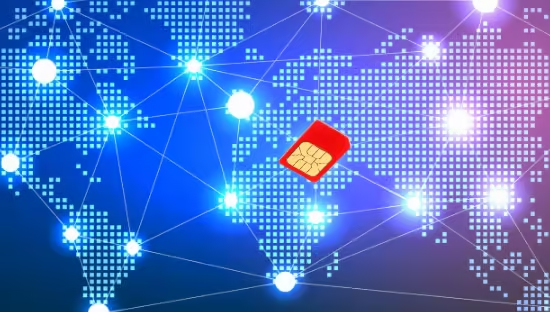
The Future of NFC: A Deep Dive into the $30.55 Billion Market
As we step into the future, technology continues to weave itself into our everyday lives, pushing us toward a more connected world. One of the most fascinating developments in this realm is Near Field Communication (NFC) technology.
In this article, we’ll explore what NFC is, where the market is headed, and why it’s essential for our future.
What is NFC?
NFC stands for Near Field Communication, a set of communication protocols enabling data exchange between devices when they are close to each other. Imagine being able to make secure payments just by tapping your phone!
How Does NFC Work?
NFC technology operates on a principle similar to RFID (Radio Frequency Identification) but with certain unique features. Here’s a quick breakdown of how it functions:
- Range: NFC devices communicate at a distance of up to 10 centimeters. It’s like having a friendly chat—close enough for a personal touch.
- Active and Passive Modes: Devices can be either active (sending and receiving data) or passive (only receiving, like a listener).
- Data Transfer: It facilitates the transfer of data such as payment information, tickets, or personal information between two devices.
NFC Market Overview
According to recent reports, the global NFC market is set to grow from $21.69 billion in 2024 to $30.55 billion by 2029. That’s a CAGR (Compound Annual Growth Rate) of 7.1%! This growth is mainly driven by the rapid adoption of NFC in various sectors, particularly in emerging economies.
Key Growth Factors for NFC
- Urbanization and Industrialization: Countries like China and India are developing smart cities that boost NFC adoption.
- Mobile Commerce: As shopping moves online, the need for secure payment solutions rises.
- Smart Card Demand: The penetration of NFC solutions in various smart devices is instrumental.
NFC Hardware: The Heart of the Market
The NFC hardware segment is vital for the functionality of NFC solutions. This segment includes several components that we can’t overlook:
NFC-enabled Devices
- Smartphones: The primary devices facilitating NFC transactions.
- Smart Tags: Small tags that store essential data.
 Applications of NFC Hardware
Applications of NFC Hardware
- Contactless Payments: Imagine breezing through the checkout process without reaching for your wallet.
- Access Control: NFC is widely used in security systems, allowing users to access secure locations effortlessly.
Regional Insights: Leading the NFC Market
North America: The Golden Child
North America is leading the NFC charge, given its high smartphone penetration and technological infrastructure. Here’s why:
- Key Players: Companies like Broadcom and Qualcomm are investing heavily in NFC technology.
- R&D Focus: Advanced research and development in the region foster innovation.
Asia Pacific: The Emerging Powerhouse
Countries like China and India are not just catching up; they’re setting the pace with rapidly growing urban areas that require efficient solutions.
The key companies in the NFC companies include NXP Semiconductors (Netherlands), Broadcom (US), Qualcomm Technologies, Inc. (US), Texas Instruments Incorporated (US), STMicroelectronics (Switzerland), Renesas Electronics Corporation (Japan), ams-OSRAM AG (Austria), Thales (France), and Infineon Technologies AG (Germany).
Key Challenges in the NFC Market
While the future looks bright for NFC technology, we must also acknowledge some hurdles:
- Lack of Awareness: Many potential users are unaware of NFC’s benefits, hindering its adoption.
- Compatibility Issues: Ensuring that different devices can communicate seamlessly remains a challenge.
Opportunities for Expansion
With challenges come opportunities. The rising need for connectivity offers several advantages for the NFC market:
- Device Connectivity: The need for devices to communicate securely and effectively will drive NFC adoption.
- Smart City Initiatives: Urbanization projects worldwide present a fertile ground for NFC technology.
NFC & Travel Industry
NFC (Near Field Communication) technology has transformed various aspects of travel, enhancing convenience and efficiency for travelers. Here are several ways NFC is impacting the travel experience:
- Mobile Payments: NFC enables contactless payments through smartphones and wearables. Travelers can make payments for transportation, meals, and accommodations without needing cash or cards, making transactions quicker and safer.
- Boarding Passes and Ticketing: Many airlines and transportation services now allow travelers to store digital boarding passes on their mobile devices. NFC technology enables users to simply tap their devices at gates or ticket booths, streamlining the check-in process.
- Hotel Check-ins: NFC technology is increasingly being used for mobile hotel check-ins. Guests can bypass the front desk by using their smartphones as digital keys to access their rooms, enhancing convenience and reducing wait times.
- Travel Cards: Some countries offer NFC-enabled travel cards that allow for easy access to public transport systems. Travelers can load money onto these cards and tap them at entry and exit points.
- Tourist Information: NFC tags are often placed in tourist areas, allowing travelers to access information, maps, or audio guides by simply tapping their NFC-enabled devices on the tags.
- Enhanced Security: With NFC payments, travelers can reduce the risk of losing their cards or cash. Many mobile wallets offer added security features, such as biometric authentication, making transactions safer.
- Luggage Tracking: Some luggage tracking systems utilize NFC technology to help travelers keep track of their bags. By tapping their device on a tag, they can confirm the location of their luggage in real-time.
- Local Experiences: NFC can enhance local experiences by providing instant access to special offers, discounts, or information about attractions and activities through NFC-enabled posters or kiosks.
By integrating NFC technology, the travel industry is not only improving customer experience but also promoting a more seamless and enjoyable journey for travelers.
The Future of NFC: What Lies Ahead?
With the steady growth forecasted for NFC, we can anticipate a world increasingly intertwined with this technology. Here’s a glimpse of what to expect:
- Enhanced Customer Experiences: Businesses will leverage NFC to create seamless experiences for customers.
- Greater Security Measures: As security becomes paramount, NFC will play a pivotal role in financial and personal data protection.
Conclusion
In summary, the NFC market is on the cusp of a monumental shift, driven by technological advancements and a growing need for connectivity. With its projected growth to $30.55 billion by 2029, it’s clear that NFC has laid the groundwork for smart solutions in various areas.
As we embrace this technology, we stand to benefit from increased convenience, enhanced security, and user-friendly experiences in our daily lives. The journey of NFC is just beginning, and as we navigate through this rapidly changing landscape, it’s essential to remain informed and embrace the future of communication.





 Applications of NFC Hardware
Applications of NFC Hardware





